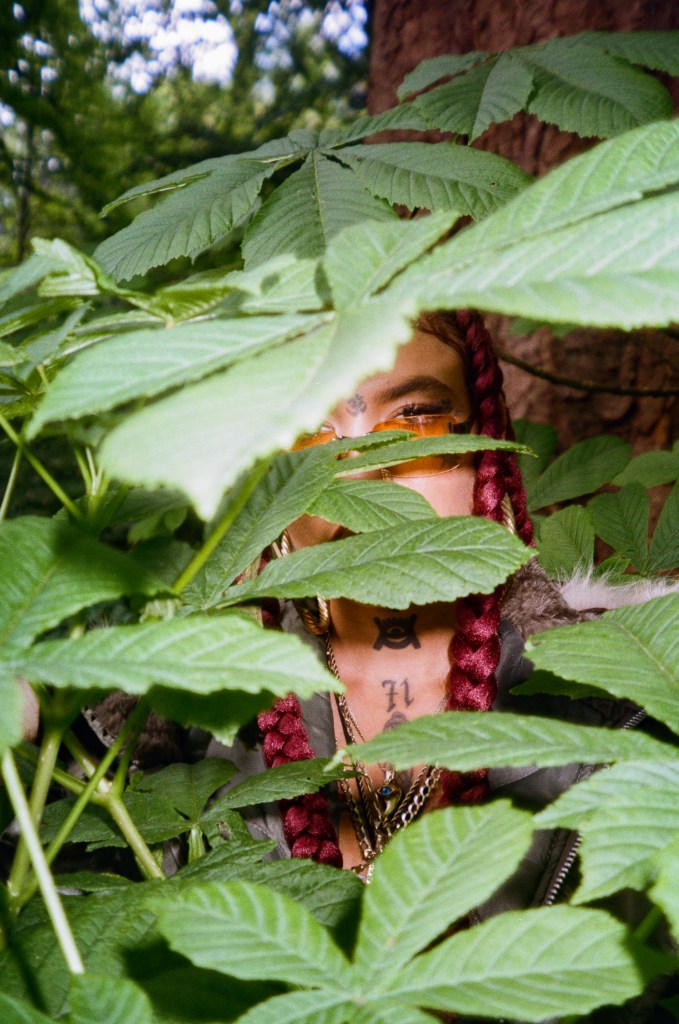In the music video for “Best” by Petite Noir (the moniker of Cape Town producer Yannick Ilunga), the viewer follows Ilunga as he encounters different tribesmen across varying African regions. Directed by Travys Owen with artistic direction from Johannesburg-raised Rochelle Nembhard, the piece aims to portray Africa as a country rife with immense history and culture —one that goes beyond safaris and kente cloth.
“I one day just had vision of showcasing the African continent in way people haven’t seen it before,” Nembhard explains to The Creators Project over the phone. “I really wanted to show how beautiful Africa is.”
Videos by VICE
Throughout the video, viewers gain insight into a powerful beauty that permeates Africa’s cultural landscape, one that you would be hard-pressed to find in textbooks or on a tour of the continent. Using CGI-rendered imagery to showcase the societal variations that one would likely see during such a cross-continental trip, Nembhard and Owen highlight particular features, such as clothing and demeanors that are representative of various local tribal cultures inhabiting the continent’s different cardinal regions.
“I basically researched tribes from North, East, West, and Southern Africa, and then I took the core bases of the tribes, like some of the colors,” Nembhard explains. “But I like to move more towards the spiritual as well and create something totally new that’s in the Noirwave context.”
For those unfamiliar, the “Noirwave” art movement—affiliated with Ilunga’s work and the art collective The Drone Society, which includes him and Nembhard—was born alongside the Petite Noir project in 2012. With a focus on integrating present-day cultures with African aesthetics inherent in the continent’s longstanding history and culture, Ilunga and Nembhard intended for this video to highlight one of the more underrated aspects associated with African culture: spirituality.
“We wanted to show with this video that like going back to ancient knowledge and back to the African sources, we can gain so much because they already had the things that we have today in Western culture,” Nembhard explains.
Riding a wave similar alongside the 21st century revival in interest of spiritualism and ideologies, Ilunga and Nembhard are interested in highlighting African mysticism and its ambience as a key factor in their video. The elements, features often understood as relating to a culture’s archetypical personality and dominating characteristics, play a key role in categorizing the different tribes in the video. Unlike in Western culture, where we are seeing connections between ideas that we treated as disjointed—take, for example, the truly direct connection between man and nature—Nembhard and Ilunga explain that African culture has forever understood the connections between the people and the World.
“A lot of our culture in Africa is still like sort of based on old religions,” Ilunga explains. “In South Africa you see witch doctors’ ads stuck all over.”
Admittedly, to some listeners unaware of true meaning behind “Best,” the video may not appear to have much in common contextually with the song. At the surface level, the lyrics seem to suggest a story that revolves around the peak of a romantic conflict between a couple (“You played games with me ’til I fell to the floor/You took me ’round and ’round”). Ilunga explains though that this is not the case, as the song is a critique of the ongoing xenophobia in South Africa and its relationship to the job market, the most famous example being the recent Marikana massacre.
“Massacres are happening in South Africa, where they killed a bunch of miners,” Ilunga told The Creators Project over the phone. “They were striking and stuff, and the police opened fire and killed so many of them.”
Similar to this sort of struggle due to unjustified animosity, the “Best” video highlights this callous nationalist conflict. Sadness constantly exudes from Ilunga throughout the track: his tired and solemn demeanor when running through the various environments alone; the crestfallen rage in his eyes when he is forced into combat with a local tribesman.
But ending on a positive note, the video showcases the senselessness behind such xenophobia, resonating with Ilunga and Nembhard’s emphases on spirituality: that we’re all the same and connected. Should noirwave infiltrate the mainstream as they plan, maybe people will begin to see this.
“As much as it is to like educate the people, it’s also a way to progress,” Nembhard explains. “To move everything forward, just humanity as a whole.”
Hear more from Petite Noir here.
Related:
Ethereal ‘Paint In Water’ Sculptures Burst With Creative Destruction
[Exclusive Video] Behind The Scenes Of Solange’s “Lovers In The Parking Lot”
Street Artists Are Fighting South African Housing Corruption With Pink Splashes Of Paint



